Improving your handwriting is about consistent practice, proper posture, and using the right tools. Here’s a quick guide to get started:
Handwriting boosts memory, reduces anxiety, and helps with emotional clarity. Start small, stay consistent, and watch your penmanship improve!
Start with the right posture. Research shows that many handwriting problems are linked to how you sit, not just fine motor skills . Aim for the 90/90/90 position: feet flat on the floor, thighs parallel to the ground, and knees bent at a 90-degree angle. Sit upright with a slight forward lean for balance.
Position your paper at an angle using the ‘Crocodile Mouth’ method . If you’re right-handed, tilt the paper to the right; if you’re left-handed, tilt it to the left. This creates a triangular space that allows for smoother writing. Use your non-dominant hand to keep the paper steady.
A comfortable grip is key to better handwriting. Here are two common techniques:
"Write slowly and focus on forming each letter carefully, treating it like an activity rather than a hurried task."
Once you’ve mastered the grip, pay attention to how your arm moves while writing.
Use your entire arm to guide your writing. Keep your elbow slightly open (around 90°) and let your wrist and forearm do most of the work, while keeping your fingers relaxed. To avoid cramping, take short breaks and include hand stretches in your routine.
Research from UCLA Ergonomics highlights the importance of reducing finger strain by relying more on wrist and forearm movements . Harvard Health also suggests adding hand massages and stretches to maintain flexibility and prevent muscle fatigue .
These simple adjustments can help improve your handwriting and make writing a more enjoyable experience.
Using the right tools can make a big difference in maintaining neat and consistent handwriting.
| Writing Tool | Best For | Features |
|---|---|---|
| Fountain Pen | Formal writing, signatures | Smooth ink flow, varied line width |
| Gel Pen | Daily writing, journaling | Consistent lines, quick-drying ink |
| Rollerball | Note-taking, planning | Requires low pressure, fluid writing |
| Mechanical Pencil | Practice, drafting | Erasable, consistent line width |
Look for a pen or pencil with a comfortable grip and balanced weight to prevent hand fatigue and keep your writing steady.
Different paper types are suited for various handwriting needs :
For beginners:
For advanced practice:
Adding creative accessories to your supplies can make the process more enjoyable.

Dark Moon Paper offers unique supplies to enhance your journaling and planning experience. Their themed collections, like "Lilac Dusk" and "Winter Hygge", include:
Combine these creative supplies with reliable writing tools to make progress while keeping your practice fun and organized.
Improving your handwriting takes consistent effort and practice.
Set aside 10–15 minutes every day for focused handwriting practice. Here’s a simple structure you can follow:
| Exercise Type | Duration | Focus Area |
|---|---|---|
| Letter Drills | 5 minutes | Practicing individual letters |
| Word Practice | 5 minutes | Connecting letters and spacing |
| Journal Entry | 5 minutes | Developing a natural flow |
Start slowly and concentrate on precision:
After building a habit, shift your attention to maintaining consistent letter sizes and proper spacing.
To ensure uniformity in your handwriting, focus on these techniques:
Once you’ve mastered spacing, explore ways to make your handwriting reflect your personality.
Creating a personal handwriting style is about blending individuality with solid technique. Look at handwriting samples you admire, practice regularly, and read your writing aloud to check its rhythm. Here are some ideas:
Compare your current handwriting with earlier samples to track your progress and pinpoint areas to refine. Celebrate the improvements you see along the way!
Take a close look at your handwriting to spot uneven letter shapes, alignment issues, or irregular spacing. Using guide sheets can help you develop more consistent letter sizes, better spacing, and proper letter formation.
Here are a few tips to improve readability:
Hand fatigue can make your writing less precise. To avoid this, focus on maintaining good posture and using your whole arm instead of just your fingers when writing. As highlighted in Handwriting for Healthy Hands, "Write at a reasonable pace with frequent breaks."
Take short breaks every hour and stretch your hands to avoid strain. Adjusting your grip and posture can also reduce pressure, making writing more comfortable.
Once you’ve addressed fatigue, you can shift your focus to fixing common letter formation issues.
After establishing a solid writing posture and practicing regularly, you can tackle specific challenges like slanted or reversed letters. Mix-ups such as b/d or p/q are common, especially for those still refining their motor skills .
For slanted writing:
For reversed letters:
"Handwriting is more than just a form of communication. It’s part of our identity… If you slow down, you become more mindful of putting pen to paper, hence paying closer attention to achieving consistency in letter forms."
Switching to cursive can also help. Its flowing style often leads to fewer letter reversals, and practicing basic shapes can build the muscle memory needed for better letter formation .
You can improve your handwriting with regular practice that focuses on posture, grip, and specific exercises . Make small, manageable adjustments instead of trying to completely change your style all at once.
Set aside 10–15 minutes each day for focused handwriting practice . Use this time to work on journaling, writing notes, creating to-do lists, or practicing letter exercises.
Dark Moon Paper offers helpful tools to support your practice, including a free Basic Lettering 101 guide, graph paper for $3.00, and their Basic Lettering series for $4.00 each.
Strengthen your hand, arm, and shoulder muscles to improve letter consistency, spacing, angle, alignment, and pressure. Incorporate these techniques into your daily routine to see steady progress in your handwriting.
Stickers Made for Planning
Our custom stickers are a fuss-free way to brighten up your planner pages with perfectly-sized designs that add a spark of personality to every layout.
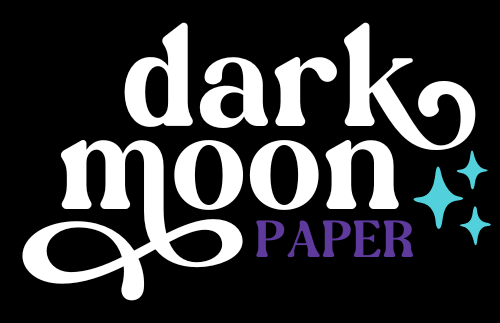
Why use planner stickers?
Planner stickers make organizing easy, fun, and personal! Add color, creativity, and structure to every page, transforming your planner into a tool that reflects you. Perfect for tracking, decorating, and staying inspired daily!
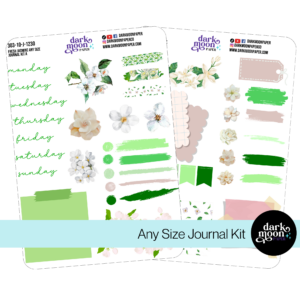
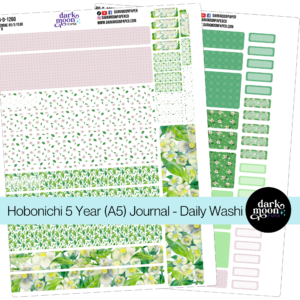
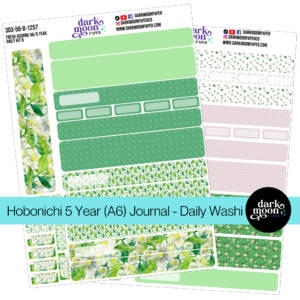
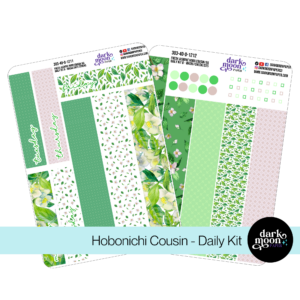

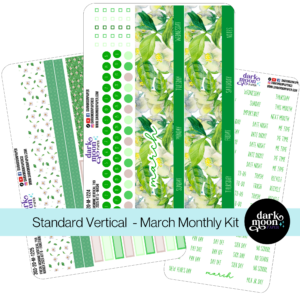

Hello and welcome!
I’m Rachael Snow, a lifelong artist and entrepreneur, and I started Dark Moon Paper to blend my love of art, technology, and the mysterious beauty of the world around us. My sticker kits are meant to set the mood, tell a story, and give you a little escape from the ordinary.
I work from my cozy studio tucked away in the beautiful woods of Oregon, surrounded by nature and a dark night sky full of stars.